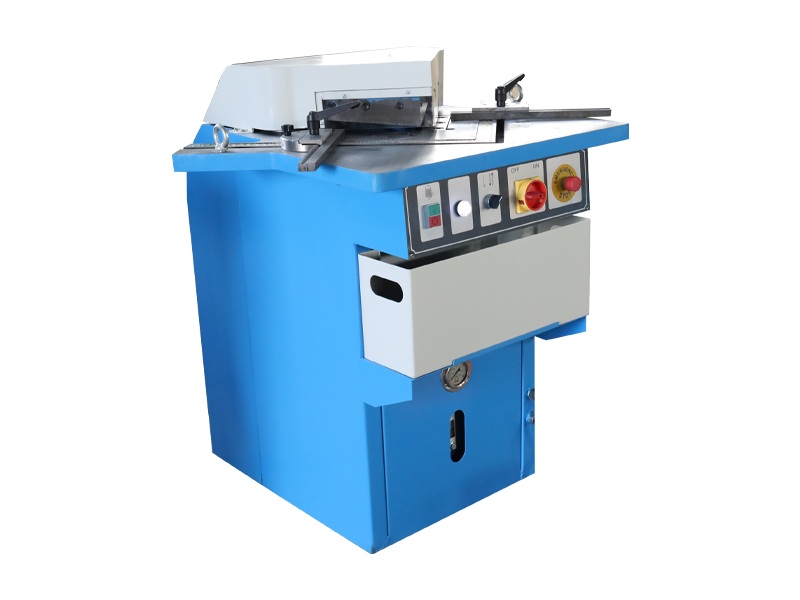In metal fabrication—where bending precision is governed by standards such as ISO 7752-1 (bending machine performance) and ASTM A606 (sheet metal bending tolerances)—electric hydraulic press brakes (EHPBs) have emerged as a transformative technology. By integrating electro-hydraulic servo drive systems with closed-loop feedback control, these machines address the core pain points of traditional hydraulic press brakes: inconsistent precision, excessive energy waste, and high maintenance costs. Below is a technically rigorous analysis of their advantages, grounded in industry-specific data, technical specifications, and real-world manufacturing applications.
1. Definition: Beyond "Combining Electric and Hydraulic Systems"
EHPBs are sheet metal bending machines that leverage electro-hydraulic servo motors to drive hydraulic cylinders, replacing the constant-speed hydraulic pumps of traditional models. A key differentiator is their closed-loop control architecture: linear encoders (resolution ≤0.001mm) and load cells continuously feed back bending angle, ram position, and force data to a CNC controller (e.g., Delem DA-66T, Cybelec DNC 880S), enabling real-time adjustments. This design eliminates the "hysteresis error" common in traditional hydraulic systems, where pressure fluctuations degrade precision.
2. Core Advantage 1: Ultra-Precision Bending Control (Critical for Tight Tolerances)
Precision in metal bending is quantified by two metrics: ram repeatability (consistency of ram position) and bending angle accuracy. EHPBs outperform traditional machines by an order of magnitude:
- Ram repeatability: ±0.01mm (vs. ±0.05mm for traditional hydraulic press brakes), ensuring uniform flange heights across 1,000+ identical parts (e.g., automotive EV battery enclosures).
- Bending angle accuracy: ±0.1° (compliant with ISO 7752-1 Class 1), critical for aerospace components like titanium alloy fuselage frames (Ti-6Al-4V), where a 0.2° angle deviation can cause assembly misalignment.
This precision directly reduces material waste from 8–12% (traditional methods) to 2–3%. For a manufacturer processing 500 tons of 6061-T6 aluminum annually, this translates to 30–45 tons of saved material—valued at $15,000–$22,500 (2024 aluminum prices).
3. Core Advantage 2: Transformative Energy Efficiency (30–50% Cost Reduction)
Traditional
hydraulic press brakes rely on constant-pressure oil supply, consuming energy even during idle periods (up to 40% of total power). EHPBs use on-demand servo-driven hydraulics: motors activate only when force is required, and hydraulic pumps adjust output to match bending loads (e.g., 100kN for 1mm aluminum vs. 800kN for 10mm mild steel). Key efficiency metrics:
- Power consumption: 5–15 kW for a 100-ton EHPB (vs. 15–30 kW for a traditional 100-ton press brake).
- Annual energy savings: $8,000–$15,000 per machine (based on $0.12/kWh and 2,000 operating hours/year).
- Eco-compliance: Meets ISO 14001 environmental standards, reducing carbon footprints by 35–40% compared to traditional models—aligning with automotive OEMs’ net-zero goals (e.g., Tesla’s Gigafactory sustainability requirements).
4. Core Advantage 3: Reduced Maintenance & Extended Service Life
EHPBs simplify the hydraulic system by eliminating redundant components (e.g., pressure relief valves, constant-speed pumps) and using wear-resistant servo motors. This reduces maintenance burden and extends machine lifespan:
- Hydraulic oil replacement: Every 18 months (vs. every 6 months for traditional machines), cutting oil costs by 67% and reducing waste disposal fees.
- Component wear: Servo-driven cylinders experience 50% less friction, extending seal life from 12 months to 36 months.
- Mean Time Between Failures (MTBF): 8,000–12,000 operating hours (vs. 4,000–6,000 hours for traditional models), minimizing unplanned downtime (a $2,000–$5,000/hour cost for high-volume shops).
5. Core Advantage 4: Low-Noise Operation & Improved Workplace Safety
Industrial noise pollution (a major OSHA concern) is drastically reduced by EHPBs’ on-demand operation and optimized hydraulic flow:
- Noise level: 65–75 dB(A) (vs. 85–95 dB(A) for traditional machines)—compliant with OSHA’s 8-hour exposure limit of 90 dB(A).
- Safety features: CNC-integrated safety systems (e.g., light curtains per EN 12622, emergency ram retraction) reduce bending-related accidents by 70%. For example, the ram’s precise position control eliminates "over-bending" risks that cause sheet metal ejection.
6. Versatility & Scalability: From Precision Parts to Large-Scale Tandem Systems
EHPBs adapt to diverse manufacturing needs, from small-batch precision components to large-format sheet metal:
- Material compatibility: Handles 0.1mm–25mm thick materials, including high-strength steel (AHSS 1500), aluminum (5052-H32), and copper (C1100), with tooling quick-change systems (3–5 minutes) for material switches.
- Tandem EHPB systems: For long workpieces (e.g., 6m construction steel beams), two or more EHPBs operate in a master-slave control architecture. Synchronization precision (≤0.02mm between rams) ensures uniform bending across the entire length—outperforming traditional tandem systems by 40%.
#Industry-Specific Applications
| Industry | Critical Components Fabricated with EHPBs | Key Benefit Utilized |
|-------------------|----------------------------------------------------|---------------------------------------|
| Automotive | EV battery enclosures, door frame reinforcements | ±0.01mm ram repeatability |
| Aerospace | Titanium alloy fuselage frames, wing ribs | ±0.1° bending angle accuracy |
| Construction | Structural steel beams, HVAC duct flanges | Tandem system scalability |
| Electronics | Aluminum heat sinks, stainless steel chassis | Low-noise operation (cleanroom兼容) |
7. Selection Considerations for EHPBs (Technical vs. Operational)
To maximize ROI, align EHPB specifications with your production needs:
- Bending force: Match to material thickness (e.g., 100 tons for 6mm mild steel, 200 tons for 12mm AHSS).
- CNC controller capability: Prioritize models with 3D simulation (e.g., Delem 3D Bend Software) for complex parts (e.g., multi-flange brackets).
- Integration with Industry 4.0: Choose EHPBs with MES (Manufacturing Execution System) connectivity for real-time production tracking and predictive maintenance alerts.


 English
English  中文
中文  Arabic
Arabic  Russian
Russian  Spanish
Spanish  Portuguese
Portuguese  French
French  German
German  Hindi
Hindi  Thai
Thai  Vietnamese
Vietnamese  Khmer
Khmer  Italian
Italian  Turkish
Turkish  Korean
Korean  Belarusian
Belarusian 

